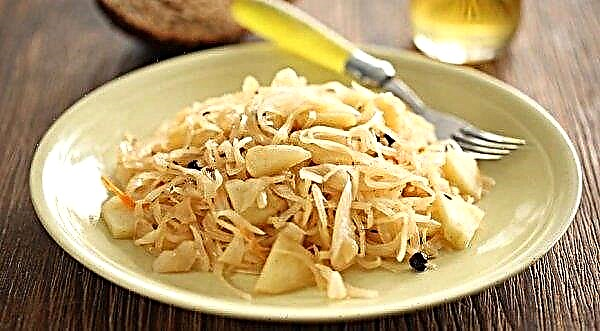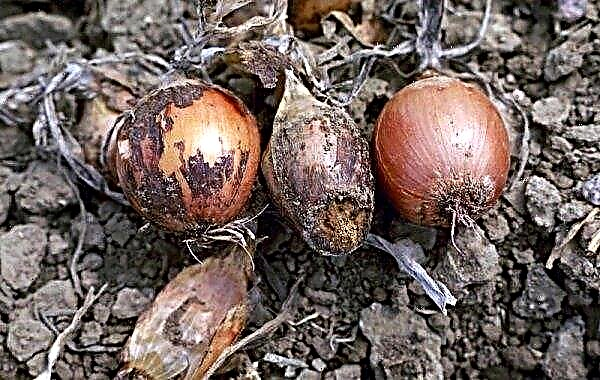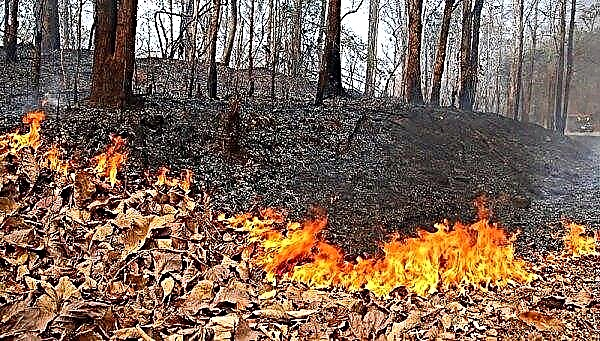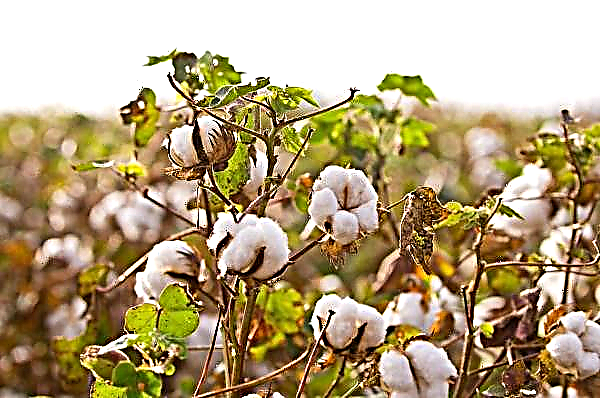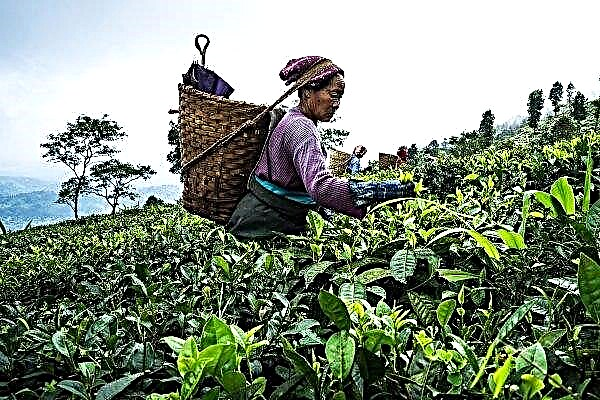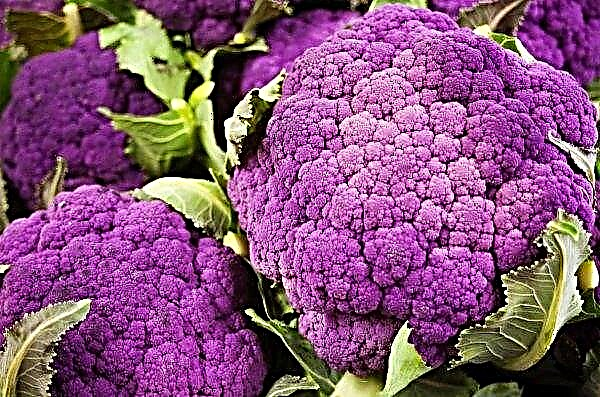A beautiful and unpretentious plant is panicled hydrangea Shikoku Flash. It pleases the eye not only with its flowering, but also with the unusual color of the leaves. A description of this culture, as well as care for it, is further in the article.
Grade description
Panicled Hydrangea (Hydrangea paniculata) Shikoku Flash is a very interesting and rare variety, which is characterized by the following characteristics:
- shrub height: from 1.5 to 1.7 m;
- stems: strong, chocolate-burgundy color;
- leaves: have an oblong shape, slightly serrated. In the spring, their color is light green, but gradually darkens, and cream and yellow strokes appear on the leaf plates. It is characterized by stable variability (variegated) color;
- rounded conical panicle inflorescences are painted white and consist of fertile (fruit-bearing) and sterile flowers;
- flowering: later (in August) and lasts until mid-autumn.
Landing rules
Planting hydrangeas is best done in the spring, but autumn planting is also allowed. This shrub is a photophilous culture, but the bright sun negatively affects the size and quality of inflorescences. Therefore, it is better to divert a section located in partial shade under this variety.
Did you know? Temporarily give hydrangea flowers a light shade using various solutions. For example, a plant will acquire pink tones of inflorescences if it is poured with a solution of potassium permanganate, and a purple hue if it is irrigated with a weak solution of copper sulfate.
Soil preparation
Before landing, preparatory work should be carried out and the following requirements must be observed:
- free the territory from excess debris and dig a shovel on the bayonet;
- for separate landing, dig holes 40 × 70 cm in size at a distance of about 70-90 cm;
- for a hedge they dig a continuous trench of the same depth and width as in the case of pits;
- loose, fertile, almost neutral (pH 5.5-6.5) soils are preferred. Well, if it is loam. Sandy soils that are too dry are not suitable for it;
- a suitable soil mixture for filling the wells may be a composition of sand, peat and humus (1: 2: 2). At the same time, 50 g of potassium sulfate and superphosphate are added to each well;
- on light sandy or sandy loamy soils, the bottom of the pit should be covered with a layer of clay (10-15 cm). On heavy soils, a drainage layer of crushed stone or expanded clay is made.
Seedling Selection
When choosing a seedling, you need to pay attention to whether the color of the leaves corresponds to the varietal description, since sometimes unscrupulous traders can offer others under the guise of this variety. To avoid cheating, it is better to purchase plants from trusted sellers (for example, in nurseries).
 If the seedling is healthy, but a little one-sided, then you should not reject it. This deficiency is corrected by pruning, and over time the plant straightens.
If the seedling is healthy, but a little one-sided, then you should not reject it. This deficiency is corrected by pruning, and over time the plant straightens.
It should also be borne in mind that a healthy seedling has:
- 2-3 strong, symmetrically growing shoots;
- the root system with an earthen lump should be moist, but without signs of mold;
- open roots should also be moist and healthy, without rotten areas. You can trim them a bit before landing.
Landing algorithm
The sequence of planting hydrangea is no different from a similar process of planting other shrubs and consists of several step-by-step actions:
- Prepare a landing pit of the appropriate size.
- If necessary, the bottom is covered with a drainage layer.
- A mound of fertile soil is formed in the center, and a seedling is placed on it (if the roots are not in an earthen coma), after which the root system is evenly distributed throughout the hole. A plant with a lump of earth is simply planted in a pit.
- The hole is covered with soil and a little tamped. Care must be taken not to sprinkle the root of the neck with earth.
- The seedling is abundantly watered with water.
- The stems are shortened a little (leave 3-4 buds).
- The trunk circle is mulched with peat, compost, bark or wood chips 15–20 cm larger than the crown diameter (the superficial root system extends beyond its projection).

Care Features
Hydrangea variety Shikoku Flash is quite simple to grow. This deciduous shrub is an ideal plant of small care and "forgives" most mistakes to gardeners. It is practically not affected by diseases and pests, winter-hardy and unpretentious.
Did you know? Pink and raspberry hydrangea inflorescences can change color depending on the acidity of the soil. On slightly alkaline soil they are crimson or pink, and on acidic soil they turn blue or purple. This does not apply to white coloring.
Watering and feeding
In the issue of hydration, it is desirable to comply with some requirements:
- increase the number of irrigation in the dry season (normal - once every 10 days);
- keep the soil moist during the formation of buds and during flowering;
- a mulching layer 5–8 cm thick will help solve the problem of drying out the soil and overheating of the roots in the summer season.

If the soil on the site is not fertile enough, then fertilizing is necessary:
- when planting: add 1 g urea, 40 g superphosphate and 35 g potassium sulfate per 1 m²;
- in spring: use a solution of urea (20 g / 10 l). Pour at least 10 liters of solution under each copy;
- before budding: fertilize each plant with 70 g of superphosphate and 40 g of potassium sulfate.
A mulching layer of compost or rotted manure will improve the structure of the soil and provide a sufficient amount of the necessary nutrients.
Pruning
The abundant flowering of Shikoku Flash begins with 4 years of life. Flowers are formed on the shoots of this year and fully ripen before the start of frost.
Important! To ensure uniform flowering, massive branches need to be cut off on the upper bud, and thin ones should be removed to the lower bud. That is, the weaker the shoot, the less buds are left on it, and the stronger - the more.
In order for the hydrangea bush to have a beautiful and well-groomed appearance, it should be formed as follows:
- after flowering, all dry inflorescences must be removed;
- in spring (before budding), all weak shoots and dry branches should be cut;
- also during spring pruning, annual stems need to be shortened by a third;
- too old branches cut into a ring to accelerate the growth of young shoots;
- when forming pruning young seedlings in autumn, leave 20 cm on each branch to stimulate tillering.

Winter preparations
Hydrangea Shikoku Flash perfectly winters even without shelters, but its superficial root system requires warming.
Therefore, winter activities are as follows:
- on the bushes, all foliage and inflorescences should be removed;
- the near-stem area should be covered with peat, dry leaves or other suitable material;
- young specimens can be tied and, bent to the ground, covered with a pine lapnik;
- to avoid winter icing of the trunks (during periods of warming and rain), the bushes can be protected with spanbond or lutrasil.

This excellent plant is ideal for both group and single plantings. Flowers will delight gardeners in the summer, and variegated leaves - in the cold season.



